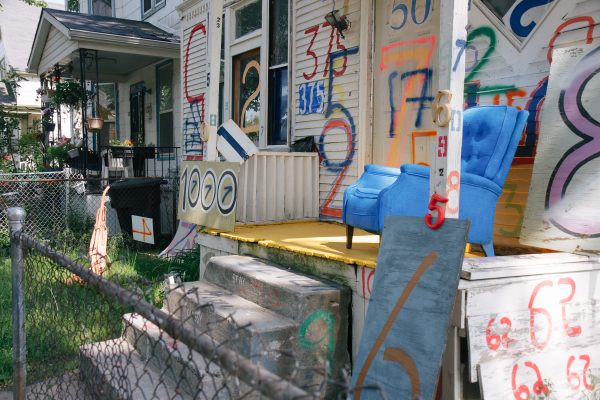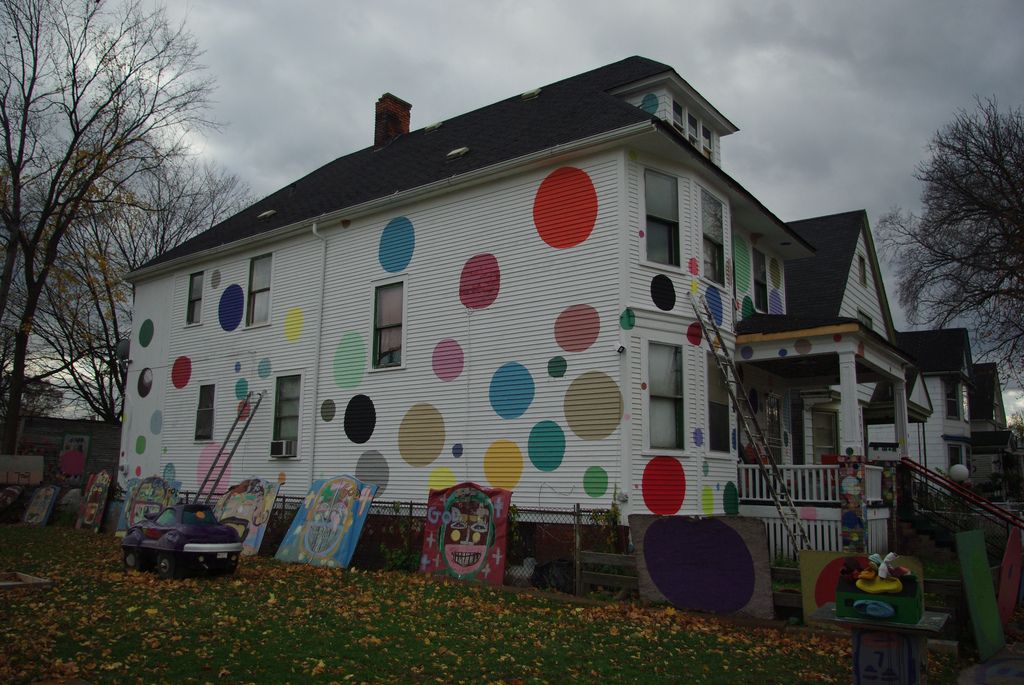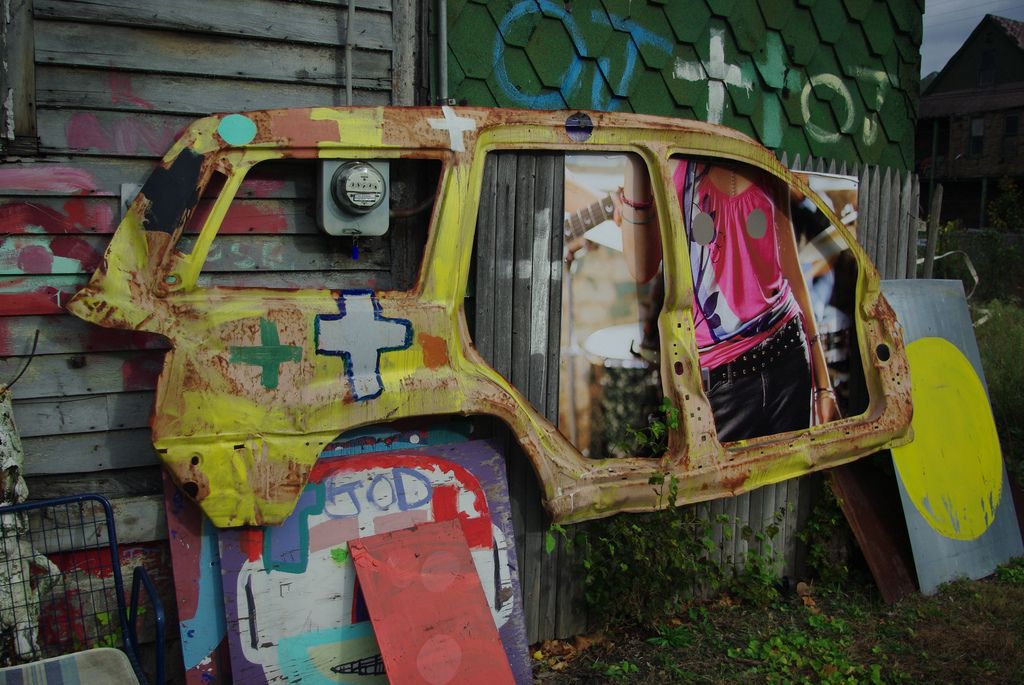About
Tyree Guyton grew up in a Detroit that was a thriving city, and his house was in a growing, middle-class neighborhood. But in 1967, when Guyton was 12, he witnessed the destructive effects of the 1967 Detroit riots, the result of social unrest over discrimination sparked by a police raid on a bar which left 43 dead and 467 injured.
When Guyton returned to the neighborhood as an adult after serving in the Army, things had only gotten worse. In his words, his neighborhood, and Detroit in general, looked as if "a bomb went off."
Started in 1986, Guyton's Heidelberg Project was his attempt to reclaim an area that had become so run-down and unsafe that people were afraid to walk through the area, even during the day time. Using paint, refuse from the neighborhood, and a small army of local kids, Guyton began transforming abandoned houses into massive works of art.
It has been a difficult road. Despite the project's having been featured everywhere from Oprah to the Today Show and considered a Detroit landmark, it was twice demolished by the city, in 1991 and 1999. Guyton, however, was undaunted and simply began anew each time. Eventually, the Wayne County Circuit Court ruled that the Heidelberg Project was protected under the First Amendment.
The project occupies the entire block and is made up of more than 20 individual art projects. Among the most significant are the "Dotty Wotty House," "Noah's Ark," and "Faces in the Hood," portraits painted on car hoods set into the ground. Today, the project is known throughout the world and receives over 200,000 visitors a year. It was even elected to represent the United States in the 2008 Venice Architecture Biennale.
In 2009, Guyton received an honorary doctorate from the College for Creative Studies in Detroit, which he attended for several years in the 1980s, before beginning the Heidelberg Project. In 2010, he was recognized by Wayne State University with a Community Leadership Award. In addition to its artistic landscape, the Heidelberg Project is an established nonprofit organization, designed to improve lives and neighborhoods through art.
In 2013, part of the Heidelberg Project was burned to the ground in a fire suspected to be arson. Another fire in November of that year took down another house. By the end of the year, five houses had burned down. Additionally, questions have been raised about unpaid taxes and foreclosures on the property. In March 2014, a sixth house was burned down.
Undeterred, Guyton announced a new vision called Heidelberg 3.0 in 2016, which would shift the project from an art installation into a larger community-focused arts village. The program moved into a new campus located at Heidelberg and McDougall in 2019, and has continued expanding its community based on principles of art, equity, and diversity.
Update as of October 2021: Some of the pieces have been removed.
Related Tags
Know Before You Go
The outdoor art environment is free and open to the public daily, from 8 a.m. to 7 p.m.
Community Contributors
Added By
Published
October 24, 2009
Sources
- http://www.heidelberg.org/history.html
- http://heidelbergproject.blogspot.com/
- http://www.huffingtonpost.com/2013/05/03/heidelberg-project-house-_n_3208235.html?ncid=edlinkusaolp00000003&utm_hp_ref=fb&src=sp&comm_ref=false
- http://www.freep.com/article/20131229/NEWS01/312290075/Heidelberg-Project-Fires-arson-taxes
- http://deadlinedetroit.com/articles/8634/fire_destroys_another_heidelberg_project_building_--_the_party_animal_house#.Uxo1QPSwKbn
- https://detroit.curbed.com/2019/5/13/18618409/heidelberg-project-tyree-guyton-whats-next


















































































































